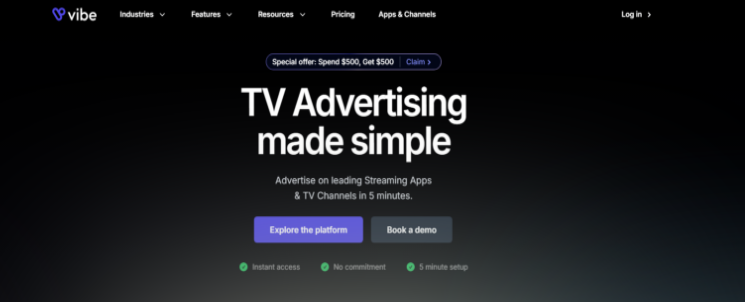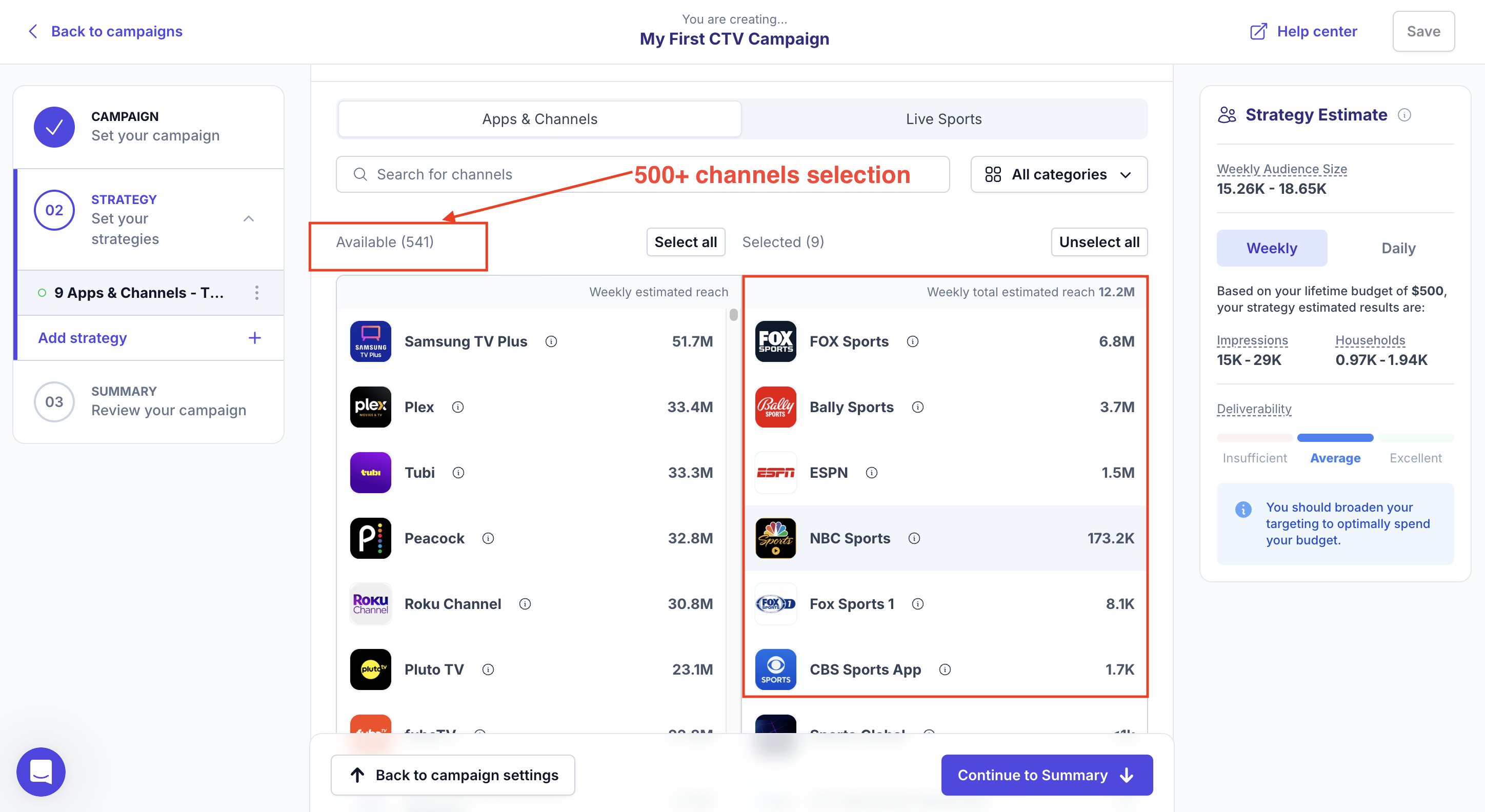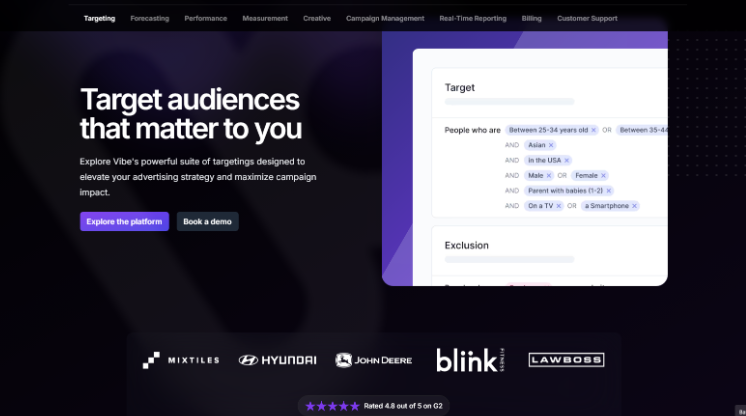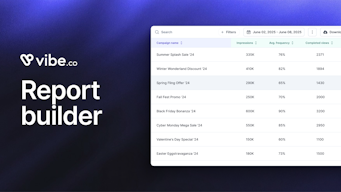OLV vs CTV: What is the difference?
Wondering whether to go with OLV or CTV? You’re in the right place!
If you're trying to figure out which type of advertising will give your campaign the edge, this blog is for you.
Understanding the difference between OLV (Online Video) and CTV (Connected TV) can make a big difference in how well your ads perform.
In this blog, I’ll break down the basics, explain the key differences, and help you see which one fits your campaign goals better. It’s all about making sure your ad budget goes to the right place.
Trust me, you don’t want to miss out on this breakdown—it might just save you time, money, and effort.
Here’s what you can expect:
- A clear explanation of OLV and CTV
- The key differences and why they matter for your ad campaigns
- Why CTV is becoming so popular with advertisers
So, before you move on to your next ad strategy, let’s make sure you’re making the right call. Keep reading, and let’s get started!
What is OLV (Online Video)?
Let’s start with the basics—what exactly is OLV (Online Video)?
Simply put, OLV refers to digital video advertising that’s delivered online through platforms like YouTube, social media, and various websites.
Whenever you watch a video ad on these platforms, you’re interacting with OLV.
It’s one of the most common ways brands get their messages out to audiences who are watching videos on their phones, tablets, or computers.
Well, think about platforms like YouTube, where pre-roll ads play before your favorite videos, or Instagram and Facebook, where you scroll past video ads in your feed.
These are all examples of OLV in action. It’s everywhere, and you probably see it more often than you realize!
So, why should we care about OLV?
The key benefits are reach, engagement, and flexibility.
- OLV allows you to target a wide audience because so many people are online.
- It’s also great for driving engagement—people are more likely to watch and respond to a video ad than just a static image.
- Plus, OLV gives you the flexibility to choose the format, length, and platform that best fits your advertising goals.
- You can even adjust your ad based on how people are responding!
Now that we’ve covered OLV, let's dive into CTV, which brings a different viewing experience to the table.
What is CTV (Connected TV)?
Alright, let’s move on to CTV (Connected TV).
You might have heard the term before, but what exactly does it mean?
CTV refers to advertising that shows up on smart TVs or connected devices like Roku, Firestick, and gaming consoles.
If you’re watching a show on a streaming app like Hulu and see an ad, that’s CTV in action.
Unlike traditional TV ads, these are delivered through internet-connected devices, making them more interactive and targeted.
So, where do you typically see CTV ads?
Common platforms include services like Hulu, Netflix (the ad-supported version), and Amazon Prime Video.
These platforms allow brands to show ads during streaming content, giving advertisers a way to reach viewers right where they are, whether it's binge-watching their favorite series or catching up on the latest movie.
If you’ve noticed more ads while streaming lately, that’s because CTV is really taking off.
But why is CTV becoming so popular?
Well, it’s no secret that more people are cutting the cord with traditional cable and switching to streaming.
CTV is riding this trend, offering brands a chance to reach viewers in a more personalized way.
The ability to target specific audiences and deliver higher-quality, engaging ads is a major reason for its growth.
Plus, viewers tend to be more engaged when watching their favorite content on-demand, making CTV ads more effective at grabbing attention.
So, how do OLV and CTV stack up against each other regarding advertising effectiveness?
Let’s take a closer look.
Advertise on leading Streaming Apps & TV Channels in 5 minutes.
OLV vs. CTV: Key Differences
Let’s get into the real comparison between OLV and CTV, and how they differ in key areas like ad delivery, audience targeting, engagement, and cost-effectiveness.
Understanding these differences will help you decide which one is the best fit for your advertising campaign.
Let’s have a look at the key differences between OLV vs CTV:
| Key Areas | OLV (Online Video | CTV (Connected TV) |
|---|---|---|
| Ad Delivery | Delivered through internet browsers and apps like YouTube, Instagram, and websites. | Ads are shown on streaming devices and smart TVs like Roku, Firestick, and gaming consoles. |
| Audience Targeting | Targeting based on online behaviors (search, watch, engage on social media). | Household-level targeting, showing ads to everyone watching on the same TV. |
| Engagement and Impact | Seen in fragmented settings (mobile devices, multitasking), decent engagement. | More immersive experience, higher engagement rates due to focused viewing. |
| Cost Effectiveness | More affordable, and great for tight budgets, but ROI can vary. | More expensive upfront but often delivers higher engagement and better ROI. |
With these differences in mind, let’s see why more advertisers are shifting towards CTV and how it’s changing the game for modern advertising.
Why CTV is a Better Option for Modern Advertisers
Let’s break down why CTV (Connected TV) has become a favorite for advertisers.
It blends traditional TV's familiarity with the precision of digital advertising.
Here's how it stacks up against OLV (Online Video).
1. TV-like Experience with Digital Perks
CTV offers a TV-like experience with digital advantages:
- Longer Ad Views: Viewers watch CTV ads longer without skipping.
- Non-skippable Ads: Your ad is always seen in full.
- Reduced Ad Fatigue: Fewer ads lead to a better viewer experience.
| Key Factor | CTV (Connected TV) | OLV (Online Video) |
|---|---|---|
| Ad Views | Longer, non-skippable | Shorter, often skippable |
| Ad Fatigue | Reduced, fewer ads shown | Higher, frequent interruptions |
With CTV, your ads are likely to be viewed fully, giving your message a greater impact.
2. Highly Engaged Audience
CTV reaches a highly engaged audience:
- Less Multitasking: Viewers are more focused on the content.
- Greater Attention: Ads are seen in a relaxed, distraction-free environment.
| Key Factor | CTV (Connected TV) | OLV (Online Video) |
|---|---|---|
| Multitasking | Less multitasking, more focused viewers | Viewers are often multitasking |
| Attention | Greater attention, especially during shows | Lower attention, especially on mobile |
CTV viewers are more likely to watch your ad with fewer distractions.
3. Higher Engagement and Better Results
CTV offers better results through higher engagement:
- Stronger Engagement: Ads appear during immersive, distraction-free viewing.
- Better ROI: Higher return on investment due to better targeting and focused viewers.
| Key Factor | CTV (Connected TV) | OLV (Online Video) |
|---|---|---|
| Engagement | Stronger, immersive viewing experience | Weaker engagement, more distractions |
| ROI | Higher ROI, better targeting and engagement | Lower ROI, less precision in targeting |
In short, CTV combines the best of TV and digital ads. It gives you better audience engagement and stronger results.
Related Read: CTV Ad Measurement (7 Key Metrics to Track)
Curious to learn more?
Let’s explore how CTV can boost your next campaign!
VIBE: How CTV Advertising Solution

VIBE is a tool that lets you show your ads on TV shows and streaming apps.
So, when people are watching their favorite series or movies, your ad can pop up at just the right time, grabbing their attention when they’re fully engaged.
Why VIBE is a Great Choice:
- Control Where Your Ads Go: With VIBE, you get to decide exactly when and where your ads appear. Want them to run during a hit TV show or in the middle of a movie marathon? You’re in control.

- Perfect Timing for Maximum Impact: Since you can choose when your ads appear, they’re more likely to hit viewers when they’re most focused, making your message more memorable.
Why Should You Use VIBE for CTV Ads?
- Premium, Focused Audiences: Your ads reach highly engaged TV viewers—people who are more likely to pay attention to what’s on the screen.

- Cost-Effective and Targeted: VIBE makes it easy to target the right audience, and it won’t break the bank. You can get great results without overspending
The Future of Advertising: Why VIBE and CTV Are Changing the Game
Advertising is moving forward, and CTV (Connected TV) is becoming the best way to reach people who are truly paying attention.
With tools like VIBE, you can take your ads to the next level by reaching the right people at the perfect time.
Let’s look at how VIBE compares to traditional advertising methods:
Quick Comparison: VIBE vs. Without VIBE
| Feature | With VIBE | Without VIBE |
|---|---|---|
| Ad Placement | You decide when and where ads appear | Ads show up randomly, which is less effective |
| Audience Focus | Viewers are more focused on watching premium content | Viewers are often distracted |
| Ad Skipping | Ads are watched fully, non-skippable | Ads are more likely to be skipped |
| Cost Efficiency | Better results for your budget | Lower results, less targeting |
Create a TV ad Spot For Free in 2 Minutes
Conclusion
So, now that we’ve walked through the differences between OLV and CTV, let’s recap what we have learned.
OLV offers flexibility and affordability, making it a great option for reaching users across different devices and platforms.
But CTV takes things to the next level by offering a more immersive, TV-like experience with longer ad views and highly engaged audiences.
Both have their strengths, but when it comes to deeper engagement and lasting impact, CTV has the upper hand.
VIBE gives you the power to place your ads on premium content, like TV shows and movies, ensuring they’re seen by people who are truly paying attention.
It’s not just about reaching more people; it’s about reaching the right people, at the right time, with a more personalised and memorable ad experience.
VIBE makes the transition to CTV easy and cost-effective, which is why it’s fast becoming the future of advertising.



